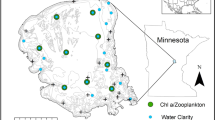Abstract
Mysidium columbiae (Zimmer) is common in shallow water in Kingston Harbour, Jamaica. It is found during the day in shoals close to the mangroves, usually but not exclusively in the shade of the trees. The shoals can be seen swimming horizontally a few centimetres below the surface of the water in a manner similar to shoals of small fish, for which indeed they were at first mistaken. The behaviour of Mysidium proves to be a combination of fixed responses to external stimuli and social responses by which the shoals are built up and maintained.
This is a preview of subscription content, access via your institution
Access options
Subscribe to this journal
Receive 51 print issues and online access
$199.00 per year
only $3.90 per issue
Buy this article
- Purchase on SpringerLink
- Instant access to full article PDF
Prices may be subject to local taxes which are calculated during checkout
Similar content being viewed by others
Author information
Authors and Affiliations
Rights and permissions
About this article
Cite this article
STEVEN, D. Shoaling Behaviour in a Mysid. Nature 192, 280–281 (1961). https://doi.org/10.1038/192280b0
Issue date:
DOI: https://doi.org/10.1038/192280b0
This article is cited by
-
The More the Merrier: Swarming as an Antipredator Strategy in the Mysid Neomysis Integer
Aquatic Ecology (2007)
-
Zooplankton spatial patterns in two lakes with contrasting fish community structure
Hydrobiologia (1994)
-
Horizontal patchiness in zooplankton populations in two Ontario kettle lakes
Hydrobiologia (1983)
-
Patchy distribution of zooplankton: Behavior, population assessment and sampling problems
Marine Biology (1982)
-
Interaction between schools of fish and mysids
Behavioral Ecology and Sociobiology (1982)



